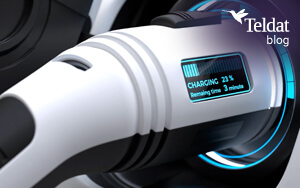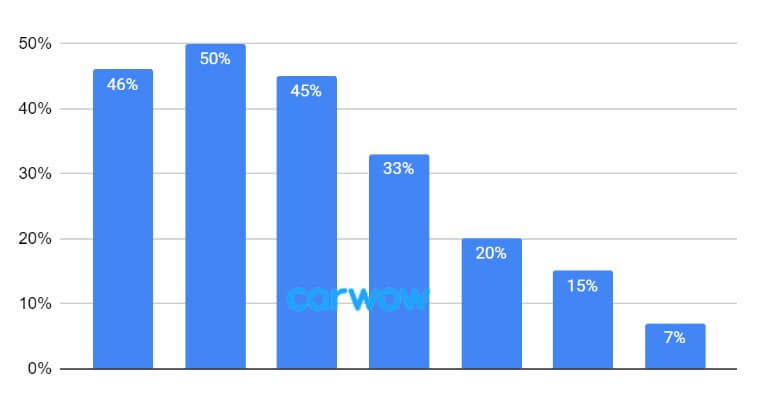
The new Alternative Fuels Infrastructure Regulation, AFIR, entered into force on 1 January 2024. Issued by European Parliament, its aim is to ensure a network of alternative fuel infrastructures is available throughout the EU. This regulation is part of the “Fit for 55” package, whose goal is to reduce the EU’s net greenhouse gas emissions by (at least) 55% by 2030, compared to 1990 levels, and to achieve climate neutrality by 2050.
But what does this have to do with communications at charging stations? Do we have to read the regulations, which are often tedious and almost incomprehensible? Not in this case. The regulation is quite straightforward and a simple summary shows communications are at the core of it.
As an example of the importance accorded to communications in this EU regulation, information on charging points for electric vehicles has been included in the Spanish Access Point inititative (NAP) as of 9 February 2024. There is now a single, official page containing all the charging points belonging to every operator. As a result, this information can now be added to mapping tools such as Waze or Google Maps. However, for it to work, operators must provide this information. To do so, the charging stations must be duly connected equipped to relay this information.
General Objectives of AFIR
This regulation is quite simple to understand and clearly states its high-level objectives, which can be summarised as follows:
- Ensure that users of alternative fuel vehicles can easily travel across the EU.
- Promote the deployment of alternative fuels infrastructure across the EU.
- Create a competitive market for alternative fuel infrastructures.
As we mentioned in a previous blog post, while charging networks in northern Europe are well developed, other countries (such as Spain) are still far behind. AFIR’s main goal is to establish a framework that contributes to the growth of this type of infrastructure and encourages the use of electric vehicles. Without charging stations, users do not switch to electric cars but, without a big number of electric vehicles “on the move”, there is little incentive to build more charging stations.
The graph below shows how, according to a survey conducted by CarWow in Spain in 2023, 46% of respondents did not consider switching to an electric vehicle due to a lack of charging points. At least this is what the average citizen perceives.

- 46%: Not enough charging points
- 50%: More expensive than combustion engine cars
- 45%: Autonomy is insufficient
- 33%: Not sure how long the battery will last
- 20%: Not sure how it will maintain its economic value.
- 15%: No, I have no concerns about this
- 7%: Others
Specific goals based on the General Objectives of AFIR
Understanding the importance of the objectives set by the AFIR regulation is simple, but how are we supposed to reach them? We can briefly summarize the more specific regulatory goals:
- Specific and mandatory milestones have been set for the installation of recharging and refuelling points for alternative fuels, such as electricity, hydrogen, liquefied natural gas (LNG) and shore-side electricity supply, for passenger cars, heavy duty vehicles, aircraft and ships.
- Goals must be met by 2025 or 2030, depending on the type of infrastructure and mode of transport.
- Users of electric or hydrogen vehicles should be able to pay easily at recharging or refuelling points via credit/debit cards or contactless devices, without having to subscribe and enjoying full price transparency.
- Operators of recharging or refuelling stations must give consumers comprehensive information on availability, waiting time and prices at the different stations using electronic means.
Regarding the last two points, the regulation itself indicates the importance of connectivity at charging stations or at individual charging points: it is necessary for users who want to pay using a terminal embedded in the charging point itself, and for operators (CPOs) that need to inform end users about the location of these stations.
The European regulation has also forced distributors to offer real-time meter readings, which has translated into bigger investments and innovations in their communications networks. Since I don’t want to draw attention to other topics, we will discuse the use of existing infrastructures to increase the bandwidth to the meter in future blog posts.
Without connectivity, we will not be able to unlock charging points.
AFIR, Recharging Stations and Communications Deployment
When it comes to electric vehicle charging infrastructures, AFIR’s mandatory deployment targets are as follows:
- By 2025, each Member State must have at least 10 electric recharging points per 100,000 inhabitants.
- By 2030, each Member State must have at least 15 electric recharging points per 100,000 inhabitants.
It is important to note that the ratio used does not take into account drivers, but inhabitants (meaning the target to substantially increase the number of charging points is even more ambitious). In addition, stations must have an on-site payment system and provide real-time information on their status (always remaining operational). All of this poses a true challenge for Charge Point Operators (CPOs).
The importance of communications to achieve these goals is clear, but does AFIR take them into account more explicitly? Let’s find out:
1) Firstly, it sets interoperability requirements for communications between charging points and vehicles. These requirements ensure that vehicles can use any charging point that complies with the AFIR regulation.
-
- More specifically, the interoperability requirements of the AFIR regulation are based on the ISO 15118 The latter defines a series of standard communication messages between charging points and electric vehicles, ensuring all electric vehicles (regardless of their make or manufacturer) can use any AFIR-compliant charging point.
2) Secondly, the AFIR regulation establishes security requirements for communications at charging stations. These requirements ensure that communications are secure and that user data is protected.
-
- The security requirements of the AFIR regulation are based on the ISO/SAE 16883 The latter defines a set of security measures for communications at recharging points, ensuring they are secure and user data is protected.
3) Thirdly, the AFIR regulation promotes the use of advanced communication technologies at recharging points. These can help improve the efficiency and reliability of communications.
-
- Some of the advanced technologies being put forward are, for instance, 5G networks for WWAN communications.
Fit for 55
AFIR – Adequate Communications are a must
Whichever way you look at it, without proper communications at electric vehicle charging stations, meeting the deployment targets imposed by the EU regulatory framework will be impossible.
The opinion of experts in communication technologies and cybersecurity is key, not only due to regulatory constraints, but also due to the fact that having non-operational recharging points causes tangible and intangible costs that are difficult to recover (e.g., a dissatisfied customer who will not use the point again). Any potential savings associated to a cheaper solution are lost the first time a communications failure occurs, since an operator must travel on-site to verify there is no connection and ensure the rest of the infrastructure works properly.
The interoperability, safety and advanced technology requirements laid down by this regulation will help improve the user experience of electric vehicle drivers and boost the growth and adoption of this type of technology (quelling public fears).
At Teldat, we have been offering customized communications and cybersecurity solutions for over 35 years. Thanks to having our offices (design, manufacturing and support) in Madrid, we can listen to customer needs and solve most common problems, coming up with solutions that allow us to offer whatever service is needed.



























